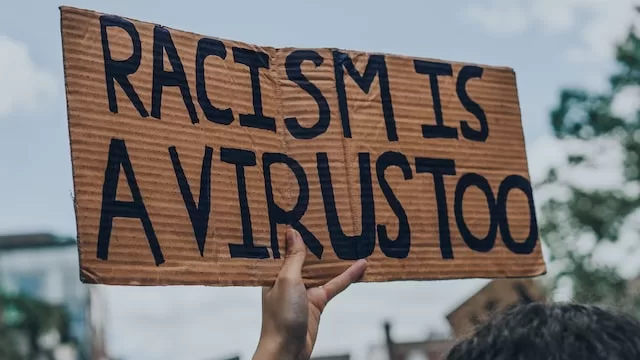Racism refers to the belief that one race is superior to another, while ethnocentrism is the belief that one’s own culture is superior to others. Both racism and ethnocentrism can lead to discrimination and prejudice, but racism is considered to be a more extreme form of discrimination.
The definition of racism

Racism is usually defined as an attitude or belief that one race is superior to another, or that certain racial characteristics are inherently better or worse than others. This can manifest itself in discrimination against people of other races, or in the belief that certain races are more deserving of certain rights or privileges.
The definition of ethnocentrism
Ethnocentrism is the belief that one’s own culture or ethnicity is superior to others. This can manifest itself in everything from a lack of interest in other cultures to outright hostility towards them. Ethnocentrism is often closely tied to nationalism and can be used to justify xenophobic and racist attitudes.
Racism Vs. Ethnocentrism – Key differences
Though both racism and ethnocentrism can lead to discrimination and conflict, there are some key differences between the two concepts. For one, racism is usually based on physical characteristics, while ethnocentrism is often based on cultural or religious differences. Additionally, racism typically involves an element of power, whereby those in positions of power seek to maintain their dominance over those they deem to be inferior. Ethnocentrism, on the other hand, can exist even in cultures where there is no significant difference in power between groups.
Ultimately, racism and ethnocentrism are both harmful attitudes that can lead to discrimination and conflict. However, understanding the key differences between these two concepts is important to effectively address and combat them.
How are ethnocentrism and racism-related?
There are a few ways to answer this question, but let’s start with a definition of each term. Ethnocentrism is the belief that one’s own culture or ethnic group is superior to all others. Racism is discrimination against people based on their skin colour or ethnicity.
With that in mind, it’s easy to see how the two concepts are related. Ethnocentrism can lead to racism, as people who believe their own culture is superior may view other groups as inferior and not worth equal treatment. Additionally, racism can be a manifestation of ethnocentrism, as people may discriminate against others based on their cultural beliefs.
However, it’s important to note that not all instances of ethnocentrism or racism are malicious or intentional. In many cases, people may simply be unaware of their own biases and assumptions. Nonetheless, both concepts can have damaging effects on individuals and groups alike.
Is ethnocentrism a form of discrimination?
Yes, ethnocentrism is a form of discrimination. It is the belief that one’s own culture is superior to all others and that those who do not adhere to it are inferior. This can manifest in many ways, such as believing that one’s race is superior, or that those from other cultures are dirty or barbaric. Ethnocentrism can also lead to intolerance of other cultures and a lack of understanding or appreciation for their customs and beliefs. While racism specifically refers to prejudice or discrimination against someone based on their race, ethnocentrism can encompass any form of bigotry based on cultural differences.
How is ethnocentrism shown in society?

Ethnocentrism is often exhibited in society through discriminatory behaviours and attitudes towards individuals or groups who are perceived as being different from the majority. This can be seen in things like racism, sexism, ageism, and xenophobia. It can also be exhibited in more subtle ways, such as when people make assumptions or judgments about others based on their cultural background or preferences.
Discriminatory behaviours and attitudes are often the results of ignorance or a lack of understanding of other cultures. When people are not familiar with something, they tend to view it as strange or inferior. This can lead to a feeling of superiority over those who are different, which can then manifest itself in discriminatory behaviour.
Ignorance and a lack of understanding can also be perpetuated by the media. The way that minorities are portrayed in the news or entertainment can influence the way that people think about them. If they are only ever seen as criminals or victims, for example, then it is easy to understand why some people might view them in a negative light.
It is important to remember that everyone is capable of exhibiting ethnocentrism at times. It is only when it becomes a persistent problem that it becomes an issue. If you find yourself behaving in a discriminatory manner towards someone, try to take a step back and consider why you might be doing so. Are you reacting out of fear or ignorance? Or are you truly convinced that your way of life is superior to theirs?
What are the five principles of critical race theory?
1. The first principle of critical race theory is that racism is a normal and natural part of American society.
2. The second principle of critical race theory is that white people and people of colour are not equal; instead, they are in different racial categories with different levels of power and privilege.
3. The third principle of critical race theory is that racism is not just about individual attitudes and behaviours; it is also about the laws, policies, and institutions that uphold white supremacy.
4. The fourth principle of critical race theory is that people of colour have always been active agents in their liberation, rather than passive victims of racism.
5. The fifth principle of critical race theory is that solidarity across racial groups is essential to the fight against racism.
Photos by
Daniel Reche: https://www.pexels.com/photo/eggs-in-tray-on-white-surface-1556707/








